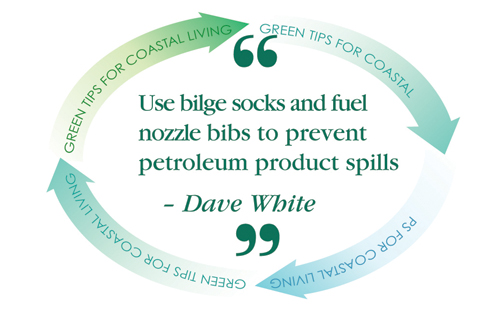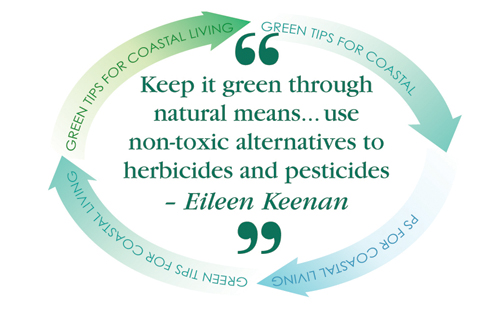Spread the word and educate your family, friends, and neighbors about
ways they can help protect the waters of New York, from the Atlantic Ocean and
Long Island Sound to Lakes Ontario and Erie and all points in
between.
The tips include conservation measures for protecting vital
resources in both New York’s Great Lakes waters as well as the State’s estuarine
resources, particularly those of Long Island Sound and along the Hudson River
...
"Green Tips" Topics
Recreational
Activities
- On the Water: Clean & Safe Boating (Click
Here)
- On the Water: Clean Marinas (Click
Here)
- On the Water: Making Urban Waterways Accessible to All (Click
Here)
- On the Water: Alerting Pet Owners of Potentially Lethal Toxins in New York Waters (Click
Here)
- At the Beach: Rip Currents (Click
Here)
- At the Beach: Sand Dunes, Littering, Stewardship (Click
Here)
- For Anglers: Ethical Recreational & Commercial Practices (Click
Here)
- For Anglers: Engaging the Next Generation (Click
Here)
- For Anglers: Safety at Sea Training (Click
Here)
Everyday Practices and Education
- Disposal of Unwanted Medicines (Click
Here)
- Microplastics in Our Waters (Click Here)
- Keeping an Organic Lawn, Garden (Click
Here)
- Managing Cesspools and Septic Systems to Protect NY's Waters (Click Here)
- Estuary Education: Know Your Influence on the Watershed (Click
Here)
- Climate Change Education: Covering Climate in the Classroom (Click
Here)
Seafood Safety: Get Educated, Eat Up!
Recreational
Activities
Clean &
Safe Boating back to top

In New York's Great Lakes region alone, more than 1,400
boaters pledged to be environmentally-sound after visiting the 2010 Discover
Clean and Safe Boating exhibit at events throughout the freshwater shoreline
region. The 2011 edition of the campaign includes a fishing boat, a canoe, and
national Stop Aquatic Hitchhikers information on how boaters can reduce the
spread of unwanted invasive species.
In 2012, aquatic invasives remained a hot topic, along with life-saving in-water demonstrations.
The
exhibit has now been seen by more than half-a-million boaters and
potential boaters and counting at over 50 events through 2014 in all of New York
state's coastal regions, including this year's Empire Farm Days and even the New York State Fair.
The pledge that boaters sign includes a number of safe practices:
- Controlling boat sewage by using pumpouts and dump stations
- Keeping boating waters free of litter and waste
- Preventing fuel and oil from entering the water by using a bilge sock and
fuel nozzle bibs
- Practicing good boat cleaning and maintenance methods
- Safe boat operation and minimizing the impact of a boat's wake
- Controlling the spread of aquatic nuisance species - Recreational
boating can provide vectors (ie., boats and other watercraft) for the spread of
aquatic invasive species. Practicing safe and clean boating can help provide
prevention, early detection, rapid response measures, and long-term management
and control – all of which can help reduce the cost of coping with invasive
species in New York State.
For more on clean boating and preventing the spread
of aquatic invaders, Click
Here
And for more on aquatic invasive species education, see NYSG's
aquatic invasive species Web site (Click Here), and details on the
Great Lakes Sea Grant Network's Nab the Aquatic
Invader site (Click
Here).
Clean
Marinas back to
top
- Providing marina owners with practical information techniques, products and
practices they can use to improve environmental practices and minimize potential
sources of pollution at their facilities.
For more on marina environmental Best Management
Practices (BMPs) education (Click
Here).
At the
Beach: Rip Currents back to
top
- Rip currents are a potential deadly threat, accounting for more than 80
percent of lifeguard beach rescues. Lifeguards and surfers can usually detect
beach rips, but most beachgoers have difficulty spotting them. So remember, When
in doubt, don't go out' and swim near a lifeguard.
For more on rip currents education, Click
Here.
At the
Beach: Sand Dunes, Littering, Stewardship back to
top
- Sand dunes and their plants are fine to look at, not to touch. In a single
summer, as few as 25 round trips on a path can destroy half the vegetation on
the path. While plants living on sand dunes as well as the sand dunes themselves
are fragile in many ways, the dune plants are tough enough to survive the harsh
conditions of the dune environment if left untouched. In the long-term, you'll
be glad you read the signs and stayed away from fenced-in and restricted areas
at beaches. Aside from all the animals, birds, and insects that call the dunes
home, sand dunes act as a barrier from storm energy, absorbing much of the
destructive forces from storms, allowing the inland areas to remain
calmer.
Here are some other helpful tips while in the area:
- Minimize your impact at beaches and other public recreational areas by
practicing “carry-in, carry-out."
- Bring an empty bag and pick up litter others have left behind
- Read your local newspapers to learn about upcoming beach cleanups,
interpretive hikes, or other stewardship opportunities that you can get involved
in. Just to give you an idea of how "pitching in" a little goes a long way:
During a 2008 Alliance for the Great Lakes Adopt-a-Beach™ clean-up, 30,053
pounds of trash was removed from Great Lakes beaches across Illinois, Indiana,
Michigan, Ohio, and Wisconsin.
- Reduce the amount of litter you generate and buy goods made from recycled
materials.
For more on sand dunes and wetlands
education, Click
Here.
And for more on stewardship efforts in NY's Great Lakes, Click Here.
For
Anglers: Ethical Recreational & Commercial Practices back to
top
- The most important rule in developing good fishing ethics is to uphold the
conservation laws. Almost every species is governed by a combination of seasonal
closure, bag limit and size limit to protect them against overfishing, and these
regulations are meaningless without the full co-operation of the public.
- Abiding by fishing regulations in your area has a greater effect than you
may know. Fisheries managers work to balance protection of fish and their
habitat while providing enough fish for people to catch. Throughout North
America many fisheries are in trouble, mostly from damage or loss of important
reproductive habitat that is so necessary to sustain native fish populations for
future generations to enjoy.
For more on sustainable recreational and commerical fisheries in
New York's Great Lakes waters, Click Here.
And for more on fisheries in New York's marine
waters, including tips on how to be an ethical angler, Click
Here.
For Anglers:
Engaging the Next Generation back to
top
- Another way we're helping to bolster public awareness and understanding of
New York's aquatic resources is through the I FISH NY program, a partnership
with the New York State Department of Environmental Conservation. Throughout New
York State, this initiative introduces urban residents to the sport of fishing.
And for more on events, lesson plans, games and more provided by the
I FISH NY program, Click Here.
For Anglers: Safety at Sea
Training back to
top
- Why should fishermen take the time to learn about life-survival gear and
safety techniques such as fire fighting, the use of flares and how to respond to
flooding on their vessels? “Without a doubt, I’d rather learn here on the dock
than offshore when it’s 5 degrees in February,” said angler John Scheu, at a
Summer 2010 training course in Montauk, NY.
For more resources related to safety and survival at sea
training, Click
Here.
Everyday Practices and
Education
Disposal of Unwanted Medicines
back to
top
- Don't flush unwanted or unused medicines. Watch your local news for
take-back events.
For more on unwanted medicines education, Click
Here.

Keeping an Organic Lawn, Garden back to
top
- When it comes to taking care of your backyard, keep it green through natural
means: use non-toxic alternatives to herbicides and pesticides for your lawn and
garden. These chemicals can be washed off your property and carried into local
waterways.
For more on water quality education, Click
Here.
Estuary
Education: Know Your Influence on the Watershed back to
top
The more you know about fragile ecosystems like estuaries,
the more likely you are to respect their unique character.
- That's why, through a 2009 partnership with the NY-NJ Harbor Estuary
Program, NYSG helped update Exploring the Estuary, a guide to estuary education.
Estuaries and their surrounding wetlands are bodies of water usually found where
rivers meet the sea. They're home to unique plant and animal communities that
have adapted to brackish water — a mixture of fresh water draining from the land
and salty seawater.
- If you're looking for another approach to engage young people in
environmental education, there 2010's Discover the Hudson River Booklet.
- Long Island Sound is another estuary of national importance. This natural
resource provides recreational fun for us, habitat for wildlife, and income to
many local economies. However, the Sound is heavily affected by the 20 million
people who live within 50 miles of the coastline. We all must do our part to
make sure we understand how our everyday actions affect Long Island Sound and
protect it however we can.
Here are a few ways you can help around your home, backyard, school and Long
Island Sound:
- Conserve water — use low-flow faucets, shower heads, reduced-flow toilet
flushing equipment, and water saving appliances.
- Maintain your septic system — improper maintenance can contaminate ground
water and surface water with nutrients and pathogens
- Recycle — everything from cans and bottles to paper and plastic shopping
bags
- Dispose of cell phones, batteries and other electronic devices
properly.
- Reduce the use of household chemicals by selecting less toxic alternatives
and using non-toxic substitutes wherever possible.
- Conserve energy — one way is by replace your incandescent bulbs with
mercury-free, efficient compact fluorescents.
For more on estuary education in the Hudson River and NY-NJ
Harbor Estuary region, Click
Here.
For more on estuary education in and around Long Island
Sound, Click Here.
For additional
educational resources, Click
Here.
Seafood Safety:
Get Educated, Eat Up!
Regulations for Seafood
Processors back to
top
- Since December 1997, a U.S. Food and Drug Administration regulation has
required all seafood processors, including firms that handle, pack, store, or
label seafood, to develop and implement a HACCP (Hazard Analysis Critical
Control Point) Plan to control all food safety hazards. Through a variety of
training courses, New York Sea Grant has helped many of the thousands of seafood
processors, wholesalers, packing docks, and shellfish shipppers in New York and
across the U.S. that must comply with this regulation.
Education for Seafood Consumers back to
top
- Our Seafood Savvy publication can help consumers better understand
seafood products and how to use them safely and confidently.
- Handling Your Catch: A Guide to Saltwater Anglers offers the basics
of good fish handling practices, which, along with a little planning and
creativity, should help readers to get much more enjoyment from fishing
expeditions - and a great deal more satisfaction from the fish they bring to the
table.
For more on seafood safety education, Click Here.
And to
cook up some of our seafood recipes, Click
Here.